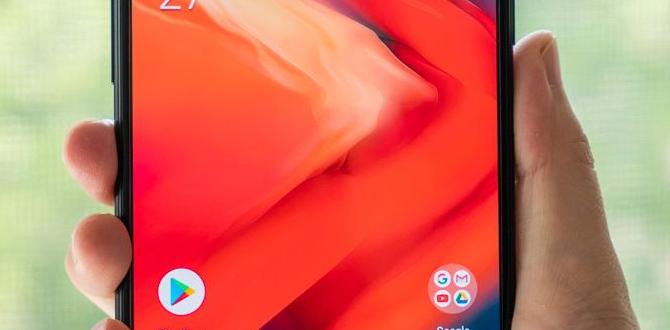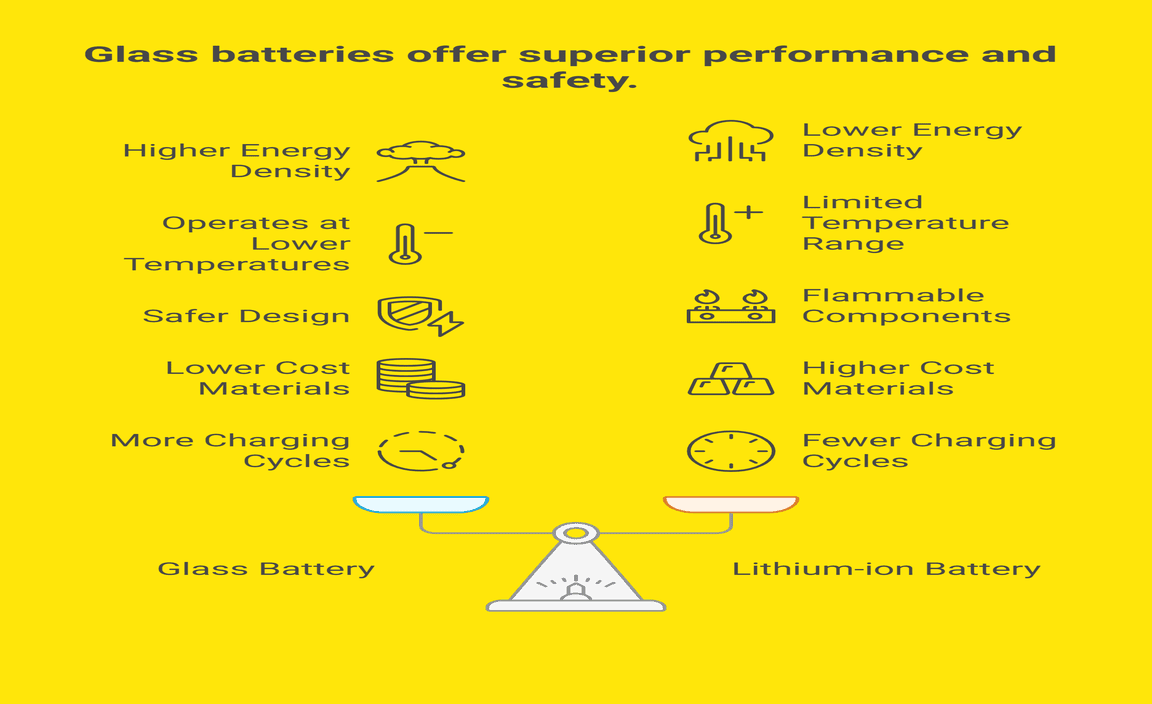Quick Summary: Using distilled water in your car battery is crucial for its longevity and optimal performance. It prevents mineral buildup and corrosion that tap water or other sources can cause, ensuring your battery stays healthy and reliable. Always use distilled water for topping up to protect your investment.
Ever heard a strange clicking sound when you try to start your car, or noticed your headlights dimming unexpectedly? These can be signs of a car battery that’s not at its best. Sometimes, the simplest solutions are the most overlooked, and for car batteries, that often means the type of water you use. It might seem like a small detail, but the water you add to your car battery can make a big difference. We all want our cars to start reliably, and keeping the battery healthy is a key part of that. This guide will walk you through why distilled water is so important for your car battery, and how to use it correctly, making battery care simple and stress-free.
Why Distilled Water is Your Car Battery’s Best Friend
Your car battery is more than just a box; it’s a vital power source that gets your vehicle going. Inside, it contains a mixture of sulfuric acid and water, called electrolyte. This electrolyte is what makes the chemical reaction happen to produce electricity. Over time, especially in warmer weather or with frequent use, some of this water can evaporate. When that happens, the electrolyte level drops, and the battery’s ability to function properly is compromised. This is where topping up comes in, and what you use to top it up is critical.
The Problem with Tap Water and Other Sources
It might be tempting to grab the nearest hose or faucet when you notice your battery’s electrolyte level is low. However, tap water, bottled water, or even rainwater are loaded with minerals and impurities like calcium, magnesium, and chlorine. These substances might be fine for drinking, but they are terrible for your car battery.
- Mineral Buildup: When water evaporates, it leaves these minerals behind. Over time, these minerals can build up on the battery plates. This buildup acts like an insulator, hindering the chemical reactions needed for the battery to charge and discharge efficiently.
- Corrosion: Impurities can also lead to internal corrosion of the battery plates. Corrosion weakens the plates, reducing their surface area and, consequently, the battery’s capacity to hold a charge. This can significantly shorten the battery’s lifespan.
- Reduced Performance: A battery suffering from mineral buildup and corrosion won’t perform as well. You might experience slower cranking, dim lights, and a higher chance of the battery failing unexpectedly, especially in cold weather.
What is Distilled Water, Anyway?
Distilled water is water that has been boiled into vapor and then condensed back into liquid in a clean place. This process removes impurities, minerals, and microscopic organisms. Think of it as highly purified water. Because it’s free from all those problematic minerals and contaminants, it’s the only type of water recommended for use in car batteries.
You can easily find distilled water at most grocery stores, pharmacies, and automotive parts stores. It’s usually sold in gallon jugs and is quite inexpensive, making it a cost-effective way to maintain your car battery.
Understanding Your Car Battery: Types and Maintenance
Not all car batteries are the same, and knowing what type you have can help you with maintenance. Most cars on the road today use lead-acid batteries. These batteries typically have removable caps that allow you to check and add water.
Common Car Battery Types:
- Flooded (Wet Cell) Batteries: These are the most common type. They have vents that can be opened to add distilled water to the cells when the electrolyte level is low. Many older cars and some newer models still use these.
- Sealed Maintenance-Free (SMF) Batteries: As the name suggests, these are designed to be maintenance-free. They have sealed tops and typically don’t require adding water. However, even these can sometimes lose water due to extreme heat or overcharging, though it’s less common. If your battery is sealed and you suspect a water issue, it’s often best to consult a professional.
- Absorbent Glass Mat (AGM) Batteries: These are a type of sealed battery that uses a special mat to absorb the electrolyte. They are common in modern vehicles, especially those with start-stop technology. AGM batteries generally do not require water top-ups and are more sensitive to overcharging.
- Gel Cell Batteries: Similar to AGM, these are sealed batteries, but their electrolyte is suspended in a gel. They are also maintenance-free.
For this guide, we’ll focus on the flooded (wet cell) batteries, as these are the ones where adding distilled water is a standard maintenance task. If you’re unsure about your battery type, check your car manual or look for removable caps on the top of the battery.
When to Check Your Car Battery
It’s a good practice to check your car battery periodically. Here are some signs that indicate it’s time for a check-up:
- Dimming headlights: Especially noticeable when idling or at night.
- Slow engine crank: The engine sounds sluggish when you try to start it.
- Battery warning light: A light on your dashboard illuminates, indicating a battery issue.
- Smell of rotten eggs: This could indicate a leaking battery or overcharging.
- Swollen or bulging battery case: A sign of damage, often due to extreme heat or overcharging.
- Corrosion on terminals: White or bluish powdery buildup on the metal posts.
- Regular driving in hot climates: Heat accelerates water evaporation.
How to Add Distilled Water to Your Car Battery: A Step-by-Step Guide
Maintaining your flooded car battery with distilled water is a straightforward process. Safety first is key here, as car batteries contain sulfuric acid. Always take precautions.
Safety First! What You’ll Need:
Before you start, gather these essential items:
- Safety Glasses or Goggles: To protect your eyes from acid splashes.
- Rubber Gloves: To protect your skin from acid.
- Distilled Water: A fresh jug purchased from a store.
- A Wrench (usually 10mm or 13mm): If you need to disconnect terminals for better access.
- Wire Brush or Battery Terminal Cleaner: For cleaning corroded terminals.
- Rag or Paper Towels: For cleaning up any spills.
- Vent Cleaner or Small Funnel (optional): Some distilled water jugs have a narrow spout, but a small funnel or a specific vent cleaner can make pouring easier and more precise.
Step-by-Step Instructions:
-
Park Safely and Turn Off the Engine:
Ensure your car is parked on a level surface. Turn off the engine completely and remove the key from the ignition. Engage the parking brake.
-
Locate Your Car Battery:
The battery is typically located under the hood, near the front of the car. In some vehicles, it might be in the trunk or under a seat. Consult your car’s owner’s manual if you’re unsure.
-
Open the Battery Vent Caps:
Most flooded car batteries have several removable caps on the top. These are usually plastic and can be gently pried off with a flathead screwdriver or just pulled off by hand. There will be one cap for each cell (usually six cells in a car battery). If your battery is sealed, skip this step and consider professional help.
Pro Tip: Hold onto the caps so you don’t lose them!
-
Check Electrolyte Levels:
Look inside each cell. You should see the battery plates. There’s usually a marked indicator (often a small plastic ring or a line) inside the cell that shows the proper electrolyte level. The level should be just above the tops of the plates, or up to that indicator mark. If you can’t see the plates, the level is likely too high. If you can see the plates clearly, the level is too low.
-
Add Distilled Water (If Needed):
If the electrolyte level is low, carefully pour distilled water into each cell. Use a funnel or the narrow spout of the distilled water jug. Add water slowly and in small amounts. The goal is to bring the level up to the indicator mark, but do not overfill**. Overfilling can cause the electrolyte to leak out when the battery gets hot, which is dangerous and can damage the battery and surrounding components.
Important: Only add distilled water. Never use tap water, mineral water, or battery acid unless specifically instructed by a battery professional after a spill or specific issue.
-
Replace the Vent Caps:
Once you’ve added water to the correct level in all cells, securely snap the vent caps back into place. Make sure they are properly sealed.
-
Clean the Terminals (Optional but Recommended):
If you see corrosion (white or bluish powder) on the battery terminals (the metal posts where the cables connect), clean them. You can disconnect the battery cables (negative first, then positive) using your wrench, clean the terminals and cable ends with a wire brush or terminal cleaner, and then reconnect them (positive first, then negative). This ensures a good electrical connection.
-
Secure the Battery:
Ensure the battery is firmly held in its place. A loose battery can be dangerous and can also be damaged by road vibrations.
When Not to Add Water: Understanding Advanced Battery Issues
While adding distilled water is a common maintenance task, it’s not always the solution for every battery problem. There are times when this simple fix isn’t appropriate or when the battery might be beyond repair.
Signs Your Battery Might Need More Than Just Water:
- A Weak or Dead Battery: If your car won’t start at all, or takes many attempts, and the electrolyte levels are fine, the battery may have lost its charge capacity or be internally damaged.
- Leaking Battery: If you see liquid leaking from the battery case, do not attempt to add water. Batteries contain sulfuric acid, which is corrosive and dangerous. This usually indicates a crack or damage to the battery casing.
- Swollen or Bulging Battery Case: This is a serious sign of damage, often caused by extreme heat or overcharging. A swollen battery should be replaced immediately, as it can be unstable.
- Constant Need to Add Water: If you find yourself topping up water frequently, it could mean the battery is being overcharged by your car’s charging system or is suffering from excessive heat. This requires investigation into your car’s alternator and electrical system. You can learn more about how car charging systems work on Energy.gov’s resources on vehicle battery systems.
- Discolored or Damaged Plates: If you can see that the lead plates inside the cells are warped, falling apart, or covered in a thick sludge, the battery is likely old and internally damaged.
What About Battery Acid?
You might wonder if you should add battery acid instead of water. The answer is almost always no, unless a battery has been spilled. The water in the electrolyte evaporates, not the acid. Adding more acid would make the electrolyte too strong, which can damage the battery plates and shorten its life. If you’ve spilled electrolyte, you’ll need to replace the lost acid. This is a more complex procedure and often best left to professionals, or requires specific replacement battery acid solutions sold at auto parts stores, mixed to the correct specific gravity.
The Role of Distilled Water in Other Power Devices
While our focus is on car batteries, the importance of using pure water extends to other areas where batteries are essential, though the maintenance tasks differ greatly.
Phone Batteries and Chargers:
Modern phone batteries (lithium-ion) are sealed units and do not require any water. Their maintenance is related to charging habits and avoiding extreme temperatures. Using the correct charger designed for your phone is crucial. Cheap, unbranded chargers can sometimes overcharge or undercharge your device, leading to battery degradation. For information on safe charging practices for your phone, reputable sources like consumer electronics sites or manufacturers’ guidelines are best.
Power Banks:
Similar to phones, power banks (also typically lithium-ion) are sealed. They don’t need water. Their care involves keeping them charged within a reasonable range (avoiding full discharge or 100% charge for extended periods) and protecting them from extreme heat or cold. Their lifespan is also affected by the quality of the charging source.
General Battery Care Tips
Regardless of the type of battery, some general principles apply:
- Avoid Extreme Temperatures: Heat is a major enemy of batteries, as it accelerates degradation and water evaporation. Cold can reduce a battery’s power output and make it harder for an already weakened battery to start the car.
- Keep Terminals Clean: Corrosion on battery terminals impedes electrical flow, whether it’s a car battery, a portable power bank, or even the battery in your remote control.
- Use the Right Charger: For electronics, always use the charger that came with the device or a reputable, certified replacement.
- Don’t Ignore Warning Signs: If a battery is showing signs of problems, address it promptly.
Distilled Water vs. Other Water Types: A Comparison
To really drive home the importance of distilled water, let’s look at how it stacks up against other common water sources for your car battery.
| Water Type | Pros for Car Batteries | Cons for Car Batteries | Recommendation |
|---|---|---|---|
| Distilled Water | Pure, no minerals or impurities. Prevents corrosion and buildup. Maintains battery performance and lifespan. | May cost slightly more than tap water (but very inexpensive overall). | Highly Recommended |
| Tap Water | Readily available, cheap. | Contains minerals (calcium, magnesium, etc.) that cause buildup, reduce efficiency, and lead to corrosion. Can damage plates. | Do Not Use |
| Bottled Drinking Water | Easier to find than distilled water for some. | May still contain trace minerals. Not as pure as distilled water. | Not Recommended |
| Rainwater | Can be relatively pure if collected properly. | Can pick up pollutants and dust from the atmosphere during collection and storage. Purity is inconsistent. | Not Recommended |
| Deionized Water | Minerals are removed. | Can potentially leach materials from the battery itself over time. Distilled is generally preferred for its stability. | Use with Caution; Distilled is Preferred |
As the table clearly shows, distilled water is the undisputed champ for car battery maintenance. The small cost upfront is a significant saving in the long run by preventing premature battery failure.
Frequently Asked Questions (FAQ)
Q1: How often should I check and add distilled water to my car battery?
A: It’s a good practice to check your car battery’s electrolyte level every few months, especially during seasonal changes or if you live in a hot climate. If you notice the level is low, add distilled water as needed. For most drivers, a check every 3-6 months is sufficient if you have a flooded battery.
Q2: Can I use filtered water instead of distilled water?
A: Filtered water, like that from a Brita pitcher or a refrigerator filter, still contains minerals that are harmful to your car battery. While some filters can reduce mineral content, they do not remove virtually all impurities like a distillation process does. Stick to distilled water for the health of your battery.
Q3: My car battery is sealed, can I still add water?
A: Sealed Maintenance-Free (SMF), AGM, and Gel batteries are not designed to be opened or refilled with water. If you suspect an issue with a sealed battery, it’s best to have it checked by a qualified mechanic or battery professional. Attempting to open them can damage the battery and void any warranty.
Q4: How much distilled water should I add?
A: Only add enough distilled water to bring the electrolyte level up to the indicator marks within each cell, usually just above the plates. Do not overfill. It’s better to add too little and check again later than to add too much.
Q5: Is it safe to add distilled water when the engine is hot?
A: It’s safest to check and add water when the car battery is cool. Hot batteries can cause electrolyte to expand and potentially splash out, and




